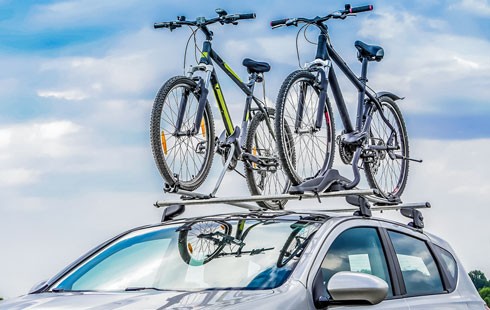
Bike rack: on the roof or on the back - take your bike with you!
Content
For many race cyclists and recreational cyclists, a bike or bike rack is an indispensable item. For a short trip or vacation - the bike must be with you. Bicycles take up a lot of space, so they must be placed outside the car.
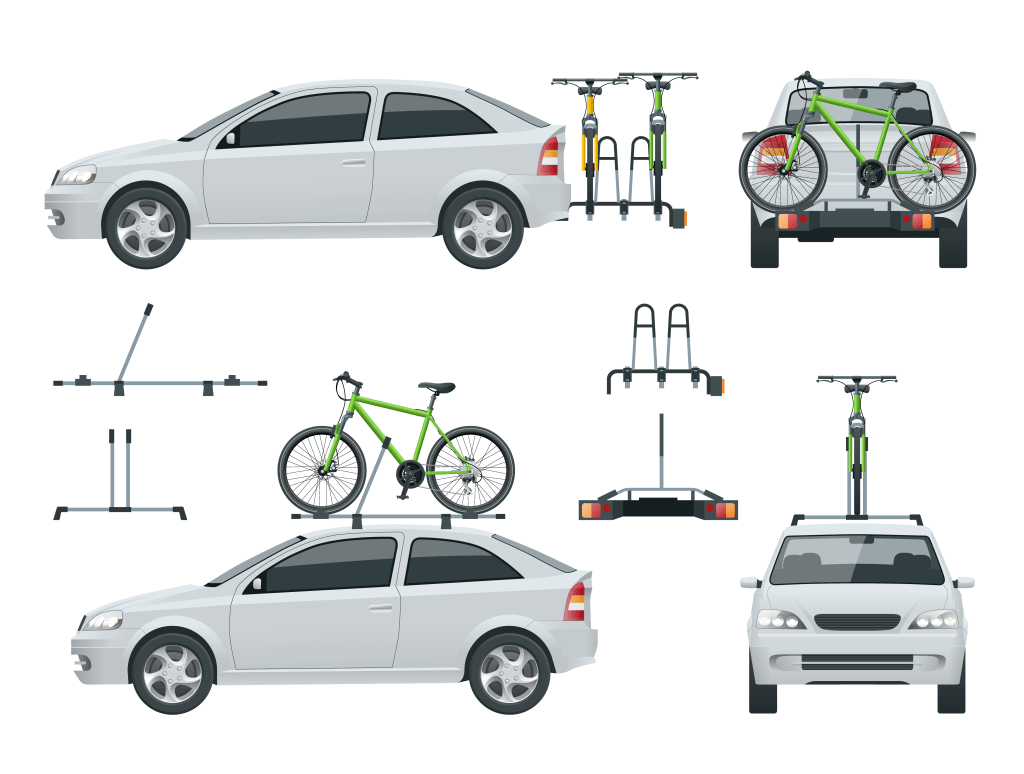
The industry offers several interesting solutions. The most common ones are:
- roof rack
– hatchback holder
- tow bar holder
A properly installed brand holder ensures safe and trouble-free transportation of your bike.
Bike rack function
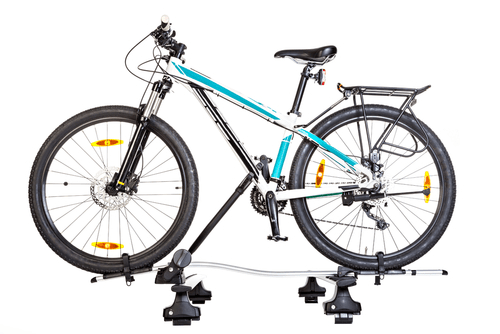
All three designs perform the same function. . The bicycle wheels are placed on the rail and the bicycle is secured by attaching it to the holder . Possibility of transportation children's bicycles needs to be confirmed before purchase. Bike racks save space in the trunk and cabin and provide additional security because bikes cannot be properly secured in the cabin . Thus, the bike does not turn into a dangerous projectile in the event of sudden braking.
An important criterion for a bike rack is its weight. . The indicated maximum weight applies to bicycles. The vertical load on the tow bar must be able to support the weight of the rack and bikes. . In the case of roof racks, the roof load, consisting of the weight of the bikes and the weight of the roof rack, plays an important role. I must say that it is unlikely that any trunk or bike will exceed the technical load either on the towbar or on the roof.
In addition, for the entire structure, it is applied: a test drive precedes the ride, allowing you to check that the bikes are properly mounted. Unintentional loosening can lead to hazardous situations on the motorway .
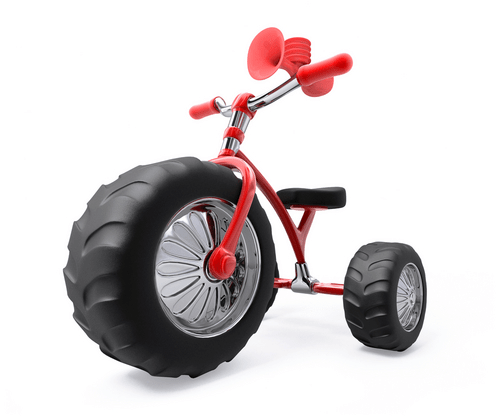
All conventional bicycles can be transported using the bike rack. They are not suitable for small children's bikes, tricycles or tandems . Many racing and mountain bikes require additional protection. Optimal distance between bikes 20 см so that the bikes do not damage each other.
Bicycle racks are not subject to a special permit. Bicycles can normally be transported on the roof of a vehicle, provided they are attached to an appropriate roof rack and the overall height does not exceed 4m.
Bicycles may also be carried in the back of the vehicle, as long as they do not block headlights, turn signals, or license plates. Bicycle carriers may only rest on the tow bar if its maximum permissible vertical load is not exceeded. When crossing the English Channel, be sure to check the legal provisions regarding the use of bike racks in other EU countries.
Sufficient stability and plenty of space:
roof rack
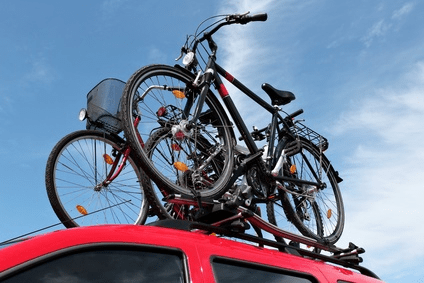
Roof racks are available for many types of vehicles . Reliable anchoring is necessary for mounting a bike rack. Depending on the type of vehicle, the roof is equipped with roof rails that allow the installation of a bike carrier.
Another installation option is the retractable roof attachment points, designed to attach a personalized roof rack to your car's roof. These are the basic structures for mounting a bicycle. If you don't have mounting options, you can install a rooftop bike rack. Some roof racks can be mounted without rails or attachment points. Some systems allow fastening to the door frame and fixing with locking systems or adjusting screws.
Bicycles are usually transported standing up on a roof rack .

Models with horizontal transport available as an alternative . They are particularly suitable for distances where free headroom is limited. Roof racks have up to three rails. The installation of the bicycle roof rack must be carried out by two people. Roof racks with a lift are especially practical in helping the user to lift bikes.
Roof racks offer enough space to carry up to four bikes . In addition, they do not interfere with the rear view of the driver. The roof rack also allows you to carry wider bikes. One of its shortcomings is the fact that it only allows lighter bikes to be carried. Steering is affected by the increase in air resistance caused by bikes on the roof.
A maximum speed of 120 km/h must be observed. A roof rack increases fuel consumption by about 35 percent. Due to their weight, e-bikes are not suitable for roof racks .
More stable and safer:
hatchback trunk

The hatchback trunk is installed in the rear of the car . It is significantly more stable than a roof rack and has adequate bike racking options, allowing you to carry heavier bikes. Hatchback trunks with a folding trunk are ideal. They make the car shorter when bikes are not being carried. Its disadvantage is significantly higher fuel consumption, up to 20 percent . The stability of the hinges of the hatchback lid should be checked, as they are subjected to a significant load under the weight of the trunk and bicycles. It is advisable to check the compatibility of the hatchback trunk with the car. Tension straps are often used in conjunction with a hatchback strut. They are attached to the hatchback cover. The hatchback strut limits rearward visibility. Driving quality is almost unchanged.
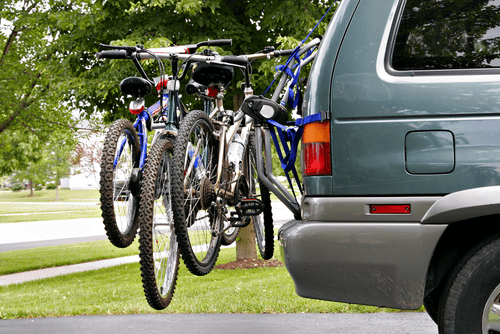
Hatchback rack can hold up to three bikes . Most media are easy to install. Tail lights and license plate are not covered.
Opening a hatchback with a loaded bike rack can be problematic. When installing the trunk, be careful not to scratch the paintwork. .
Tow bar bike racks:
practical but somewhat unstable

Towbar holders are relatively low for easy loading and unloading . The condition for their use is the presence of a towbar on the car. Consider the size of the bike. Fitting more than one wide bike to the trunk can be problematic. In some countries, a warning sign is mandatory for this type of carrier . In addition, brake lights, tail lights and license plate must be visible. Bicycles can protrude to the sides 400 mm . Rear view can be difficult.
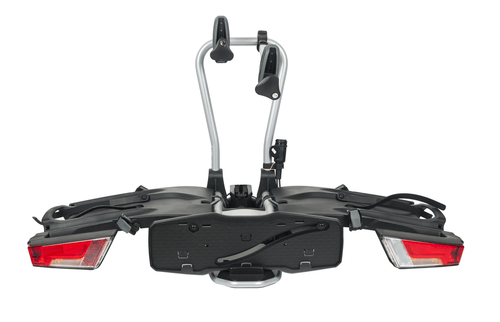
Towbar holders are mounted on the towball ball. They provide quick and easy installation and can be used regardless of the make and model of the vehicle. The towbar holders are attached with tie bolts or a tension lever. The towbar holders are not an obstacle to opening the hatchback, since the loaded trunk can be folded back. They can carry up to three bicycles. The towbar attachment can be extended with an additional rail. The fourth bike requires a separate belt.
The towbar holder can carry bicycles weighing up to 30 kg. Fuel consumption is likely to rise by 10 percent. Towbar holder increases vehicle length by up to 60 cm .
Note: all the weight of the bikes is at one point. The installation of the tow bar holder must be carried out professionally and correctly.
Bike rack accessories
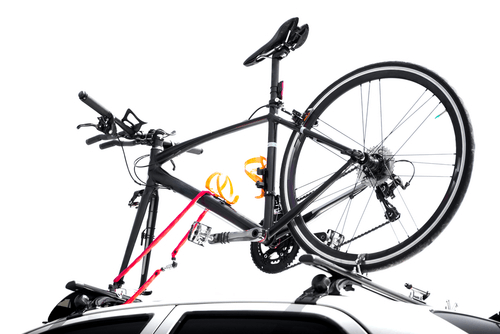
Depending on the manufacturer and design of the bike rack, various accessories are available, such as additional fabric seat belts. They are applied to the rails to fix the bike. The frame holder performs a similar function, fixing the bike on the mount with its lock. The lockable frame holder is also an additional anti-theft protection.
For loading and unloading, bike rack manufacturers supply loading ramps that make it easy to park bikes on hatchbacks and towbar carriers. Optional rear lights provide additional protection and safety on the road. Separate sockets are provided for their power supply. Additional lighting can also be installed.
The wall shelf serves as storage for the bike holder when not in use. Shelving saves space and is suitable for a garage or basement .
Common accessories for roof racks are transport boxes that can be mounted on bike racks. They are available for hatchbacks and towbars. They expand the possibilities of using the bike rack, allowing you to carry other items.
Installing bike racks
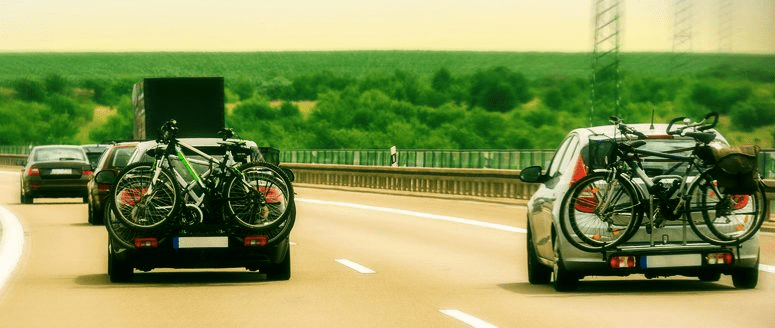
Whether on a rooftop, hatchback or towbar, mounting a bike carrier must always be done in accordance with the manufacturer's specifications. . If you don't have installation instructions when you buy a used bike carrier, you can download them online. It also allows you to check for missing parts. Only a properly installed bike rack is a safe bike rack. Any negligence irrevocably leads to dangerous situations. Therefore, read the manual several times and safely reach the resting place on your bikes.